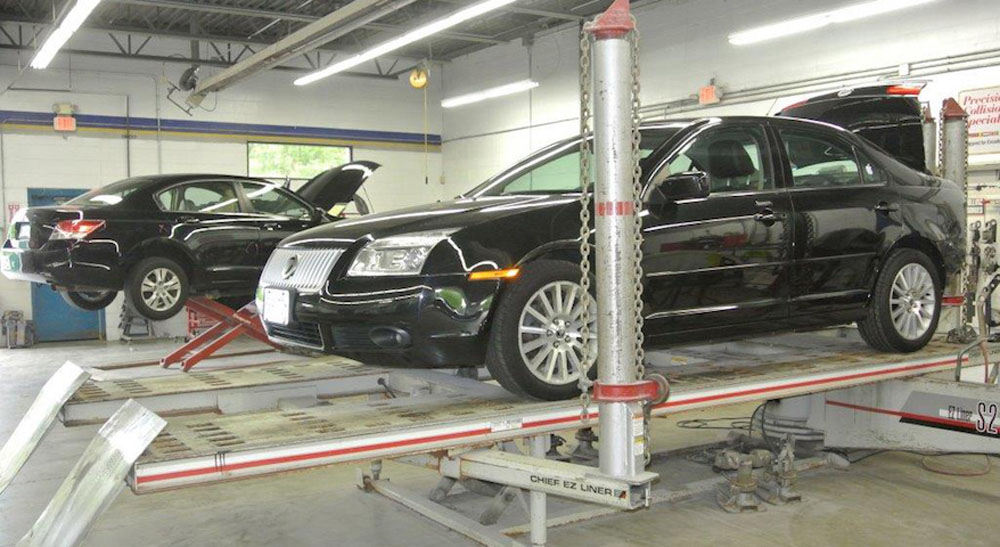
Insurance coverage can be a guide through the labyrinth of auto collision repair. Understanding the intricacies of your insurance coverage is crucial after a car crash.
Imagine the following scenario: You’re driving down the road, going about your business, when you suddenly encounter an accident. You suddenly find yourself needing repairs to return your vehicle to the condition it was in before the accident. Your insurance policy can help ease financial stress by providing a safety-net. Insurance can be a complex world, with many different types of coverage and deductibles to consider. It’s important to understand your insurance policy, regardless of whether you are a new driver or an experienced one, to avoid any hassles when it comes time to repair a collision. We’ll explain the main elements of auto coverage in the sections below, so you can make an informed decision and get the most out of your policy when something unexpected occurs.
Different types of insurance coverage
There is no one size fits all policy in the world of auto insurance. Understanding your coverage options is key to understanding the insurance coverage you have for auto collision repair. We’ll look at the various types of coverage that you might encounter.
- Insurance Liability: In many places, liability insurance is a basic coverage.If you are found to be at fault for an accident, it helps cover the damages and injuries caused to others.It does not usually cover your vehicle’s repairs.
- Collision insurance: The coverage designed for collisions with other vehicles or objects, regardless of who is at fault.The collision insurance is a valuable tool to ensure your vehicle’s repair after an accident.
- Comprehensive Coverage: Comprehensive insurance covers more than just collisions. It also includes theft, vandalism and natural disasters.This is a safety net that covers a wide range of unexpected events.
- Uninsured/Underinsured Motorist Coverage: In case you’re involved in an accident with a driver who lacks insurance or carries insufficient coverage, this type of insurance helps cover your expenses, including collision repairs, when the responsible party cannot.
- Personal Injury Protection (PIP), and Medical Payments (MedPay). Both coverage types can help cover medical costs, including those incurred due to an accident.They are not directly related to vehicle repairs but can help reduce the financial burden following a collision.
Minimum requirements and optional coverage
After we have explored the different types of insurance, it is important to examine the minimum coverage requirements set by law as well as the optional coverage options you can choose to improve your protection.
- Minimum Requirements Many regions have legal requirements specific to auto insurance.Liability insurance is usually included, and it’s designed to cover damage or injuries caused to others in the event of an accident.You should be aware of the minimum insurance requirements in your area. Failure to do so can lead to legal penalties or financial liability in case of an accident.
- Optional coverage: Insurance providers offer an array of optional coverages that go beyond the minimum requirements to provide protection against collision repairs and unexpected events.These optional coverages can include collision insurance, comprehensive insurance, uninsured/underinsured motorist coverage, and more.Optional coverage can increase your insurance rates, but it also improves your financial security.
Deductibles & Premiums
When you are navigating the intricacies surrounding your auto insurance coverage, two factors will come into play. These are deductibles and rates. Understanding how insurance works is essential.
- Deductibles The deductible is what you must pay out-of-pocket before your insurance kicks in.If your policy has $500 as a deductible, but your repair bill is $2,000, then you’d pay $500 and your insurance would cover $1,500.Deductibles are a way for you to share the cost of repairs with your insurer.
- Selecting a Deductible Amount: Many insurance policies allow policyholders the option to choose their deductible.In general, higher deductibles result in lower premiums per month but a greater upfront payment is required in the event of an insurance claim.Lower deductibles result in higher monthly premiums, but less immediate financial burden when a claim occurs.
- Insurance Premiums: The regular payment that you make for coverage is your insurance premium.The amount is usually paid monthly or annually, depending on factors such as your insurance coverage, driving record, age, and location.The premiums you pay are crucial to keeping your policy active and making sure that you have coverage when you need it.
- Premium Impact: You should be aware that a claim for insurance, particularly for accidents where you are at fault, may result in higher premiums.Insurance companies can view claimants as high-risk and increase premiums if they file claims frequently.
The conclusion of the article is:
Fairway Collision Center understands that dealing with insurance companies can be stressful after an accident. We strive to make the insurance claim process as simple and easy as possible for you. We are there to help you with the claims process. We provide accurate assessments and ensure that your collision repair proceeds smoothly.
Fairway Collision Center is a leading auto collision repair facility. You’re choosing a partner that will be by your side to advocate for your needs and ensure your vehicle’s pre-accident state. Do not let the complexity of insurance claims stop you from getting timely and effective repairs. Fairway Collision Center can help you make the repair process more convenient and easier. We are committed to ensuring that you have a positive experience.

